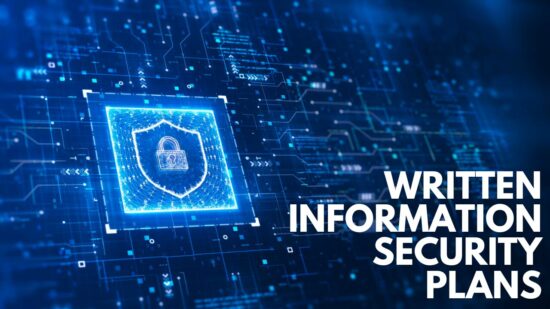Businesses today must manage an ever-growing number of security risks. From client database breaches to malicious ransomware attacks, cybercriminals are continuously searching for new opportunities and methods of exploitation. One high-risk area that is often overlooked is your company’s Wi-Fi network.
While Wi-Fi offers the advantage of fast and easy access, this convenience is also its weakness. Unprotected Wi-Fi connections provide hackers with easy network access, allowing them to introduce malware onto any connected systems and devices. This malware can instigate a number of serious attacks, including phishing, DDoS, ransomware, and more.
Closing the gaps on Wi-Fi security
In the age of digital proliferation and broad network connectivity, creating a detailed, well-defined network security strategy is more critical than ever. It requires a holistic approach that effectively blends proven practices with cutting-edge techniques. Following are some common sources of Wi-Fi security vulnerabilities, along with some best practice strategies to address them.
Outdated firmware
Keeping your business-critical data secure hinges on making sure your Wi-Fi network is operating with the latest firmware updates and patches. In some cases, your router will prompt you when an update is due. But for many IT teams, keeping firmware and drivers up to date can be a tedious, easy-to-overlook task. The best approach is to stay proactive. Periodically check the manufacturer’s website for any updates or patches for your device and keep this task high on your list of ongoing IT priorities. Today’s cybercriminals are persistent. Staying one step ahead requires ongoing diligence on your part.
A poorly protected print environment
All devices connected to a business network, including copiers and printers, represent an area of risk that often falls outside the normal security responsibilities of an IT organization. Still researchers have identified print networks and printers as potential sources of security failures and data breaches. That’s why print security best practices should be given ample attention and action, including configuring appropriate IP addresses and status, and password-protecting connected printers, along with the entire print network.
Improperly managed user behavior
A security system’s overall effectiveness hinges on correct user behavior within that system. Even robust systems can be compromised by an employee clicking on a phishing email, an ineffective firewall, or even accessing a network site on an unfamiliar device. Another area that demands business Wi-Fi attention is mobile device security. Inappropriate user behavior on a business network, including digital apps and email, can threaten a network’s security. Mobile device management focuses on both business-owned mobile device security protocols, and private or guest devices on a network.
Network piggybacking
Piggybacking on network access is a way of creating a wireless connection by discretely tapping into another subscriber’s wireless service without their knowledge or permission. This can be done from any wireless-enabled computer, and depending on the location of your business’s wireless access point, and can be completed from up to 1,000 feet away. Once on your network, the unwanted users can hack into sensitive information, monitor web traffic, or conduct other illegal activities.
Ineffective firewall
A properly implemented firewall plays a vital role in helping to keep your company’s networks separated from the Wi-Fi. It helps prevent potential hackers from breaching the Wi-Fi connection and making unwanted entry into your servers and company networks. In addition to your network firewall, consider installing a host-based firewall, which provides an extra layer of protection between the network and connected devices.
Lack of data encryption
Encrypting the data on your wireless network helps prevent those who might gain unauthorized access from actually viewing it. Should hackers breach the Wi-Fi connection, any data they obtain is scrambled and unreadable. Several encryption protocols are available to help enable this protection. The strongest encryption currently available is Wi-Fi Protected Access 3 (WPA3). While WPA and WPA2 are also available, the best approach is to implement technology that specifically supports WPA3, since other protocols lack the robust protection today’s networks require.
Reaping the benefits of outside expertise
Whether you are upgrading your existing Wi-Fi network or starting from scratch, the best protection can be achieved through careful planning and expert execution. That’s where the knowledge and experience of a competent managed serviced provider can deliver substantial value.
By outsourcing your Wi-Fi security to an outside expert, you benefit from a more robust network design, clear policies and procedures, and better awareness of potential vulnerabilities and weaknesses. These outside experts can suggest tools and techniques for improving network speed and efficiency and recommend the latest best practices for securing your Wi-Fi network. These include:
Network monitoring
Monitoring is the first line of defense against unstable or unforeseen events that affect your network performance and security. Real-time monitoring of Wi-Fi traffic through routers and network servers provides IT teams with vital insight into user behavior and trends, and helps speed response time in the event of a breach. Proactive monitoring of your business Wi-Fi network can help your thwart issues before they become a more serious problem. Remote monitoring capabilities are particularly critical for satellite offices.
Router protection
Keeping your router out of public reach can help reduce the potential for tampering or someone attempting to circumvent security protocols. It only takes a few seconds to restore the access point to factory default settings. For optimum safety, keep the router high on a shelf, secured behind a door, or otherwise out of reach where a bad actor could potentially gain access without authorization. Router ports can also be secured by properly defining the IP address. Be sure your router access point is housed in a secure area, such as a locked room or closet.
Maintain antivirus software
Be sure to install the right antivirus software and keep your virus definitions up to date. Make sure your practices include automated patching to help enforce policies and keep systems and networks up to date and enforced with the latest software patching. Also, make backups of all your data and software on a storage device that is not attached to your network or computer. Confirm that all your backups are operating properly and test them on a regular basis to make sure they will perform when you need them.
Protect your SSID
To help prevent hackers from gaining easy access to your network, avoid exposing your SSID. At the minimum, be sure to change your SSID to a unique identifier. Keeping the manufacturer’s default ID in place could open the door to an attacker skilled at identifying the type of router and possibly exploit any known weaknesses.
Employ a VPN
Installing a Virtual Private Network (VPN) as part of your Wi-Fi infrastructure can be a highly effective way to bolster your overall network security strategy. VPNs conceal user identities by masking IP addresses and routing data through a, alternate IP address. By encrypting connections and sending and receiving points, VPNs help keep out improperly encrypted traffic. Cybercriminals who manage to access to data via your VPN will find it useless, since it is encrypted on its way from sender to a receiver.
Bolstering your IT strategy
With losses from cybercrime now reaching epic proportions (up to $6 trillion globally), Securing every aspect of your network is more crucial than ever before, and that includes making special considerations for your Wi-Fi security. Wi-Fi security is not only essential to sound IT strategy; it’s a smart business practice.
To learn more about what you can do if your business faced a Ransomware Attack, or to learn how IT services can prevent a Ransomware Attack, fill out the form below!







